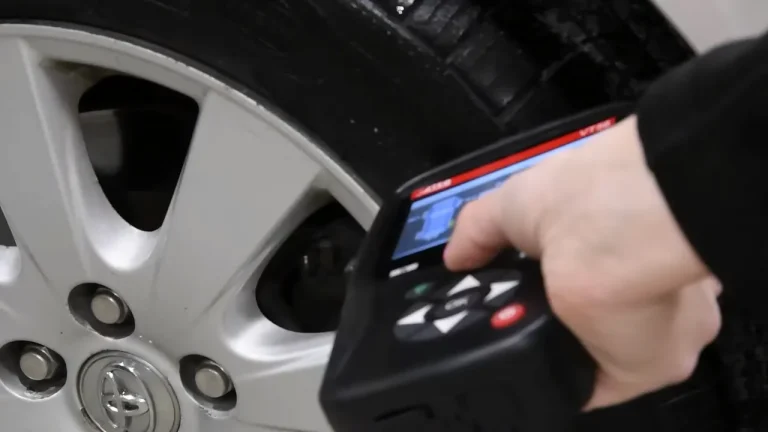Why Is the Drive (D) Light Blinking on My Honda?[Solved]
As you glide down the road in your trusty Honda, you may occasionally notice an unusual phenomenon—an intermittent blinking of the Drive (D) light on your dashboard. This unexpected blinking can undoubtedly raise concerns and leave you wondering about its significance.
The Drive (D) light is a vital indicator on your Honda’s dashboard that signals the transmission mode and provides essential information about your vehicle’s functionality. While a steady illuminated D light typically suggests that your transmission is engaged in the Drive mode, a blinking D light demands attention, as it often signifies an underlying issue.
Understanding the reasons behind the Drive (D) light’s blinking is crucial for every Honda owner to ensure the vehicle’s optimal performance and safety. Various factors can trigger this warning, ranging from minor glitches to more significant transmission problems. Fortunately, with some knowledge and awareness, you can decipher the blinking patterns and take appropriate measures to address the situation promptly.
In this article, we will delve into the possible causes behind a blinking Drive (D) light in a Honda, shedding light on the significance and potential solutions for each scenario. By the end, you will be equipped with the necessary knowledge to navigate this perplexing situation and keep your Honda running smoothly on the road ahead.
Reasons Why the Drive Light Is Blinking
When the Drive (D) light on your Honda starts blinking, it serves as a warning sign that something is amiss with your vehicle. While the specific reasons can vary depending on the model and year of your Honda, there are several common causes that may explain this behavior. Understanding these potential reasons can help you diagnose and address the issue effectively. Here are a few possible explanations:
1. Transmission Malfunction
A blinking D light often indicates a problem with the transmission system. It could be an issue with the transmission fluid level or pressure, a faulty solenoid, or a malfunctioning sensor. It is crucial to have your transmission system inspected by a qualified mechanic to identify and resolve the underlying problem.
2. Overheating Transmission
If your Honda’s transmission is overheating, it can trigger the Drive light to blink. This typically occurs when the transmission fluid is not circulating properly or when the cooling system fails to dissipate heat effectively. Continuing to drive with an overheating transmission can cause severe damage, so it’s essential to pull over, let the vehicle cool down, and seek professional assistance.

3. Electrical Problems
Electrical faults within the transmission system can also lead to a blinking Drive light. A loose connection, damaged wiring, or a faulty sensor can disrupt the communication between the various components, triggering the warning light. A comprehensive electrical inspection may be necessary to identify and fix the issue.
4. Faulty Speed Sensor
The Drive light may blink if there is a problem with the speed sensor. The speed sensor provides crucial input to the vehicle’s control module, enabling it to adjust the transmission’s shifting patterns. A malfunctioning speed sensor can result in erratic gear shifts, poor performance, and the blinking Drive light.
5. Low Battery Voltage
In some cases, a weak or dying battery can cause the Drive light to blink. Insufficient voltage can disrupt the vehicle’s electrical system, including the transmission controls. Checking the battery’s health and charging system can help determine if this is the root cause.
Frequently Asked Questions
Q: Why is the Drive (D) light on my Honda blinking?
A: The blinking Drive (D) light on your Honda typically indicates an issue with your vehicle’s transmission system. Several factors can trigger this warning, including transmission malfunctions, overheating, electrical problems, a faulty speed sensor, or low battery voltage.
Q: What should I do if I notice the D light blinking?
A: If you see the Drive (D) light blinking on your Honda, it is important not to ignore it. Here are a few steps you can take:
1. Pull over safely: If it is safe to do so, find a suitable place to pull over and turn off the engine. This will allow your vehicle to cool down and prevent further damage.
2. Check transmission fluid level: With the engine turned off, locate the transmission fluid dipstick (refer to your owner’s manual). Check the fluid level and ensure it is within the recommended range. If it is low, you may need to add more transmission fluid.
3. Inspect for leaks: Look for any signs of transmission fluid leaks underneath your Honda. Leaks can contribute to low fluid levels and cause transmission issues. If you notice any leaks, it is advisable to have your vehicle inspected by a qualified mechanic.
4. Restart the engine: After a brief cooling period, restart the engine and observe if the blinking D light persists. If it does, it is recommended to contact a professional technician or Honda dealership for further diagnosis and repair.
Q: Can I continue driving with a blinking D light?
A: It is not advisable to continue driving your Honda when the Drive (D) light is blinking. Ignoring the warning sign and continuing to drive can potentially worsen the underlying problem and cause severe damage to your transmission. Pulling over, assessing the situation, and seeking professional assistance is the best course of action.
Q: Can I fix the blinking D light issue myself?
A: While some minor issues, such as low transmission fluid levels, can be resolved by adding fluid, diagnosing and fixing transmission problems often requires specialized knowledge and equipment. It is recommended to have your Honda inspected and repaired by a qualified technician or Honda dealership to ensure an accurate diagnosis and proper resolution of the issue.
Q: How much will it cost to fix a blinking D light on a Honda?
A: The cost of repairs will depend on the specific cause of the blinking D light and the necessary repairs or replacement parts. It is challenging to provide an exact cost without a proper diagnosis. Consulting with a Honda technician will help determine the extent of the problem and provide an accurate estimate for repairs.
- Why Are My Car Headlights Not Bright Enough? - May 9, 2024
- How Long Can You Drive With An EVAP Leak? - May 9, 2024
- What Does B Stand for in a Car? [Full Guide] - May 9, 2024






![Homemade Traction Mats [Unlock Your Vehicle’s Grip]](https://automhelp.com/wp-content/uploads/2023/07/Homemade-Traction-Mats-768x461.png)
